Garmin GMI 20 & GHC 20, back on top?
In my opinion it was the Garmin GMI 10 that trail blazed the wonderful world of color NMEA 2000 all-in-one displays, but it’s gotten major competition from the Raymarine i70 (comparison here), the B&G Triton (first look here), and the Furuno RD-33 (hand’s on here). And when Garmin demoed its new 800 Glass Bridge Series in Miami, the GMI 10 also installed on the dash looked decidedly out of place. So it was really no surprise when they announced the new GMI 20 and its GHC 20 sibling last Tuesday. It will be interesting to see if they’ve outdone the competition but that’s hard to judge as these all-in-ones can potentially do so much, though not necessarily exactly what you want…
The features that Garmin emphasizes in that press release are the extra bright 4-inch bonded screen with wide viewing angles and new night color schemes like the green on black seen in the screenshot below (which is in the GMI 20’s native QVGA resolution of 320 x 240 pixels). That all sounds good but I’m not sure it’s significantly different from the competition.
Then again it’s amazing what a good graphic designer can do with so few pixels, as seen with that nice count down timer on the sail racing screen above or the trouble-light icons on the engine screen below. While these are examples of the fixed graphic choices that every all-in-one display has, they vary from manufacturer to manufacturer and I’m not sure that any but Garmin has the trouble lights yet…
But then again I’ll bet that only a few engine models currently output the N2K messages (PGNs) that can make use of those trouble lights. The manual isn’t up on the GMI 20 product pages yet, but that will help to clarify just which “100+” N2K data values it can decipher and how it can display them. It costs $550, by the way, and is supposed to ship very soon. Also note how it comes with both black and silver snap-on trim pieces intended to match either the Glass Bridge Series MFDs or their predecessors.
Above is the matching GHC 20, product page here, and its screen illustrates the rich colors these displays can show as well as some fancy moves the Garmin autopilots can make. To the best of my knowledge N2K autopilot heads only work with the same manufacturer’s ap system though they should be able to get, say, wind information from any N2K sensor. In fact, both the GHC 20 and GMI 20 also have NMEA 0183 inputs as shown in the booty shot below, though I’m not sure how that data is used because I don’t think it gets bridged onto the N2K network (as a Furuno RD-33 can). Most boaters get instrument displays that go with their existing MFDs and/or sensors and asides for aesthetics and customer service that makes sense because it’s good to have something aboard that can update their firmware, but do note that Garmin has an $80 N2K Updater as well as a variety of analog-to-N2K Adapters, and that they update their gear at a fearsome rate. Just check out the GMI 10’s recent change history.
Gizmo currently has up-to-date GMI 10, i70, Triton, and RD-33 instruments installed, and I’ve been giving them a real workout as I’ve added several new and less common sensors and I’m also experimenting with bridging the boat’s two N2K networks. (There are also both Maretron DSM250 and DSM100 displays, which I consider a somewhat different category, though not in a bad way.) At any rate, there will be coming entries about N2K tank and temperature sensing, but it’s additionally possible that I can test some combination a reader is interested in; just speak up. And how to think Garmin’s new instruments stack up?


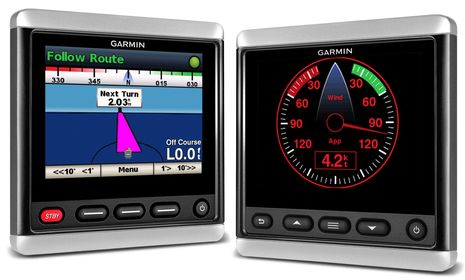
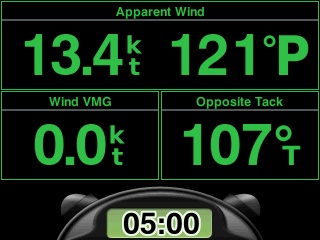
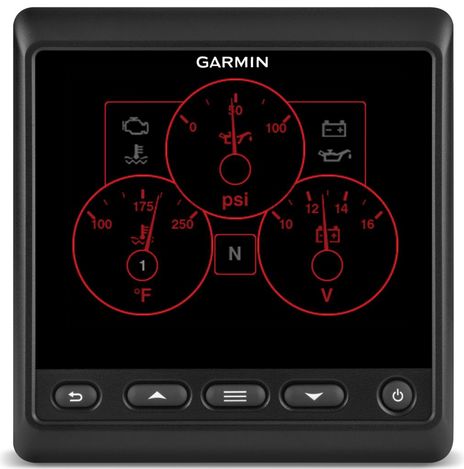
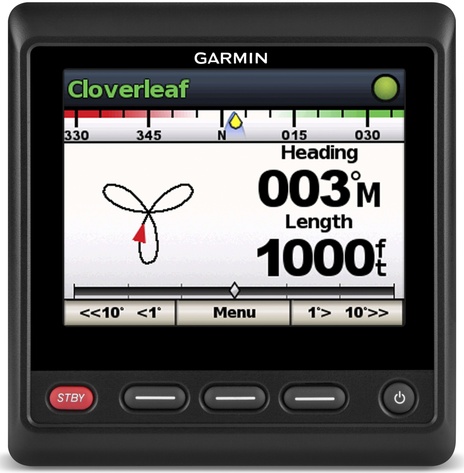
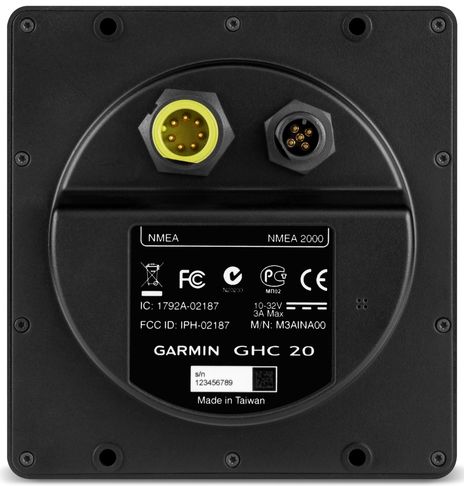
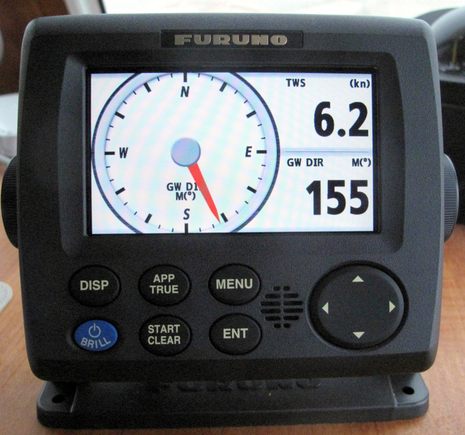
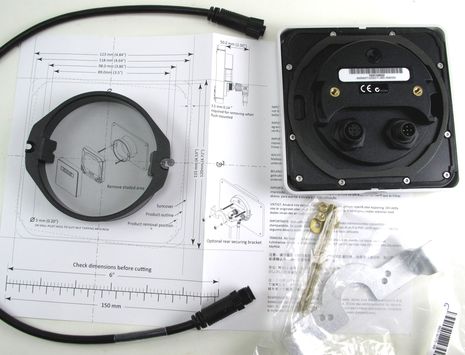









When this and one supposes , a new Garmin Nexus range are added together it will catapult them way up the scale as far as instruments go.
Thanks for bringing up Nexus! The new GMI 20 ads that Garmin is running in sailing magazines makes quite a big deal of how “Garmin and Nexus Sail Together.” The body copy reads as follows:
“Two highly respected names on the water, Garmin and Nexus, have joined together to bring you a complete line of fully integrated sailing products keenly designed for racing and cruising yachts. Such as our new GMI™ 20 marine instrument display with
highly visible color screen and low power draw. Count on this crew to make your sailing experience safer, more enjoyable, and more rewarding.”
The Garmin media guy I asked didn’t know exactly what that means and as far as I know there are no new Nexus products (yet). But whereas Nexus apparently squeezed a lot of utility out the NMEA 0183 protocol, that may well explain why that 0183 port is on the back of the GMI and GHC 20. Perhaps Garmin even built in special Nexus management and calibration software?
Finally, an upgrade for the GMI 10. Well done. But the B&G Triton sure looked fine on display the other day. It will be interesting to compare the two.
If Garmin is serious re: the sail market, they need a new wind sensor. Not a chance I’m using the current (non detachable) GWS 10 on top of my mast. The Navico 508 is looking good for that so far.
It does look fairly oldish, the hardware (frame and buttons) and the screen design (fonts? colors?). I was hoping for a sleeker design. And it doesn’t have any AIS functionality. Sorry, why was this better than the GMI 10? Ah ok, the green on black night view…
In looking at the above photos I note the countdown timer aimed at the racing sailor. Having recently bought a Raymarine e7D I was surprised to discover that while it does have a countdown timer as described in the marketing materials, I – and Raymarine phone support – have not been able figure out how to put the timer onto a screen on the e7D. Maybe you or one of your readers has a suggestion. These are exciting times for marine electronics but as always there seems to be a gulf between the promise and what actually works.
One new feature I will use regularly is the auto-scroll.
This will provide a rolling series of displays which
as a practical matter gets the data of a larger screen to you without having to reach for a control.
It seems kind of obvious for every small display to have this capability.
Brian
1) I really like the green, its very eye pleasing. Why has everyone standardized on red? Was there a reason? Does the red preserve night vision better? Will green do just as well if the intensity is turned down vs a brighter red?
2) Ideas of things to test for:
– Support beyond the standard PGN’s for long established Maretron sensor PGN’s, especially battery and tank monitoring (Any reason all the displays don’t yet support the full range of Maretron and other sensor providers PGN’s. After all, the sensor providers are vital participants to the NMEA-2000 ecosystem, and the sensors I just mentioned have been around a long time)
– Support beyond the standard PGN’s used in all boats, to information special for sailboats? Heal angle, target boat speed, etc? Support multiple speed thru water sensors, e.g. choose the leeward sensor when pairs of speed or depth sensors are used together on port & starboard?
– Test for display harmony. Can displays be organized into groups? Will manually dimming one display in a group, dim the others? Can you dim the displays easily without jumping into menu’s? How about auto dimming? Will manually choosing other settings, such as choosing magnetic vs. true north, change across all displays (not just groups)? Will changing settings in the chart plotter work across the displays also? Can you set a depth alarm in one display, and when it alarms, clear the alarm from any nearby display? Will an anchor alarm sound on all displays?
“red or green for night vision?” turns out to be a fascinating question.
http://stlplaces.com/night_vision_red_myth/
and
http://www.aoa.org/x5352.xml
are both very informative.
Great link Norse.
Evidently Garmin Plotters will pass Nexus NMEA 0183 data to the N2K bus now. I haven’t tried it but I have it on good authority that it works. Here’s a link to the pin-out and settings:
http://www.p2marine.com/marine-electronics/nexus-instruments/Nexus-to-Garmin-large-plotter.pdf